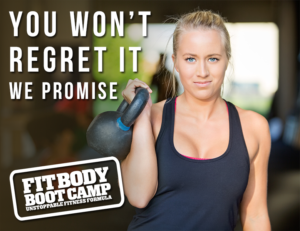All month we’re bringing you important knowledge about your heart in honor of Heart Month, because your heart deserves some love for all of the hard work it does. We’re here with more heart health facts for you and how your heart rate can relate back to your health.
Minute after minute, day in and day out, year after year, your heart is busy keeping you alive by pumping blood to your body. The number of times your heart beats per minute is known as your heart rate or pulse. When you’re at rest, this number is smaller and when you’re active it’s greater. At rest, your pulse is called your resting heart rate. At the other end of the spectrum is your maximum heart rate.
Knowing these two numbers—your resting and maximum heart rates—can be helpful in gauging your fitness level, improving your fitness, and reaching your goals.
How Fit Are You?
A normal resting heart rate varies from person to person, but usually falls between 60 and 100 beats per minute (BPM). The more athletic you are, the lower your heart rate is likely to be. When your heart is in good shape, it doesn’t have to work as hard to pump blood. It’s not uncommon for a super fit person to have a resting heart rate of 40 BPM. On the flip side, unhealthy adults with cardiovascular problems often have a faster heart rate.
 This information makes it easy to see how your resting heart rate is a helpful way to measure your fitness level as well as track your fitness progress. Before beginning an exercise program, measure your resting heart rate. And no, you don’t have to visit a doctor to determine your resting heart rate. You can wear a heart rate tracker, smart watch, or fitness tracker to find your pulse. You can also take it yourself. Before getting out of bed in the morning, gently hold two fingers (not your thumb, your thumb has it’s own sort of pulse) on the inside of your wrist or against the side of your neck and count the number of beats for 30 seconds. Double this number to figure out your beats per minute.
This information makes it easy to see how your resting heart rate is a helpful way to measure your fitness level as well as track your fitness progress. Before beginning an exercise program, measure your resting heart rate. And no, you don’t have to visit a doctor to determine your resting heart rate. You can wear a heart rate tracker, smart watch, or fitness tracker to find your pulse. You can also take it yourself. Before getting out of bed in the morning, gently hold two fingers (not your thumb, your thumb has it’s own sort of pulse) on the inside of your wrist or against the side of your neck and count the number of beats for 30 seconds. Double this number to figure out your beats per minute.
Use this number as your baseline starting point. A month into your workout routine, take your heart rate again at the same time of day. If you’ve been working hard to get into shape, your heart rate will show it. But if the number of beats per minute hasn’t decreased, it could mean your workouts aren’t challenging enough. After starting a workout routine, allow four to six weeks to see a noticeable difference in your resting heart rate.
How Effective Is Your Workout?
Exercise that causes you to barely break a sweat may not be doing you much good, while intense exercise that pushes your heart to its limits may increase your risk for injury. One way to determine whether you’re exercising at the right intensity is to know your maximum heart rate and your target heart rate.
The best way to find your maximum heart rate is at an exercise lab where multiple factors (age, oxygen consumption, and heart rate) are taken into account. If a visit to the exercise lab isn’t an option, you  can get a general idea of your maximum heart rate by exercising vigorously and taking your heart rate at the peak of your workout.
can get a general idea of your maximum heart rate by exercising vigorously and taking your heart rate at the peak of your workout.
When you know your maximum heart rate, you can alter your workout to get the greatest outcome by exercising within your target heart rate range. Periodically during your workout, take your pulse. If your goal is to burn fat, you should exercise at the target heart rate of 50–70 percent of your maximum heart rate. To improve the health of your heart, aim to exercise at the target heart rate of 75–85 percent of your maximum rate. Want to gain endurance? Train at 50–65 percent.
Wondering whether you should wear a fitness tracker or heart rate monitor? Only you can answer that question. If having a simple way to track your heart rate will motivate you to increase your physical activity, wear one. On the other hand, if it would just be a waste of money that you leave on the kitchen counter every day, you may be better off not buying it in the first place.
Regardless of your health goals, take your heart to heart and get in the gym!
